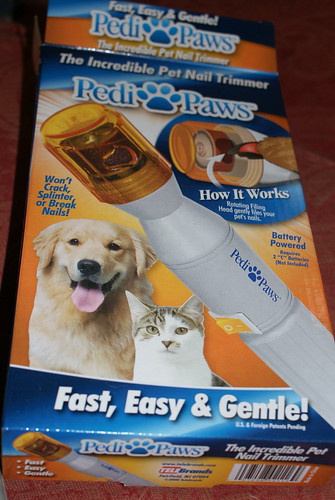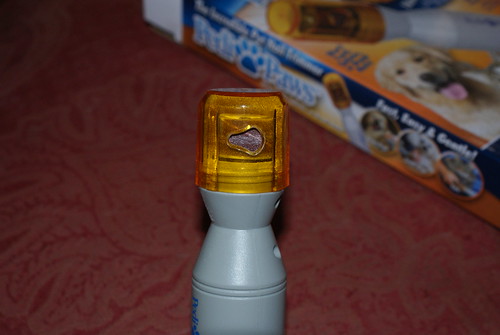
Around our house, the Knight - my husband, also known to the fur-kids as Dadaw - has nail duty. He was raised in a home where shelties were raised too, so I suppose he learned to help trim the dogs' nails after he'd mastered trimming his own. In fact, it's not unusual for my family to whisper in his ear when they hug him hello, and before we leave, he and the family dog(s) have some quality time together. He has a knack many vet techs would love to have.
Rewind to last winter. We brought home baby Sissy, our second basset hound. Bassets are notorious for being very persnickity about their feet, and Sissy took it to a new level. Finally, the Knight began to suggest that I make sure the vet trimmed her nails while we were there. It was a blow to his Dadaw-ego.
Several of you and a couple of our local friends bought Pedipaws when they first hit the market. The Knight already owned a couple of Dremel tools, so he did some research and decided Sissy wouldn't like it. So imagine my surprise - and the eye rolling - when a Pedipaws found its way into our cart a few weeks ago.

(Insert nail in that little cut-out. You can see the file below.)
He started with one nail every other night, and in under two weeks, Sissy has decided that the buzzy thing can touch all her nails in one sitting. The Knight still has to pin her down a bit, but I predict that in a few more weeks, she'll sit in his lap like Gretchen does. I don't think Sissy will ever like it, but for our pack, Pedipaws is fantastic.
Sissy's nails are rather thick, thick enough that "we" use the big dog clippers. I think that's why the Knight originally discounted the "as seen on TV" tool, but in a matter of seconds, a whole paw's worth of nails can be filed without a fight.

Gretchen seems to prefer the human fingernail clippers, but I like the smooth finish Pedipaws provides, so she's going to have to adjust.
Me? Despite countless tutorials and many assists, I've always been too afraid of nicking the quick to try on my own. However, I think that if the Knight ever tires of giving his girls their pedicures, I just might give it a whirl.
Happy Dogs on Thursday. Don't forget to visit some of the other members, and let us know about your Pedipaws experiences too.




















